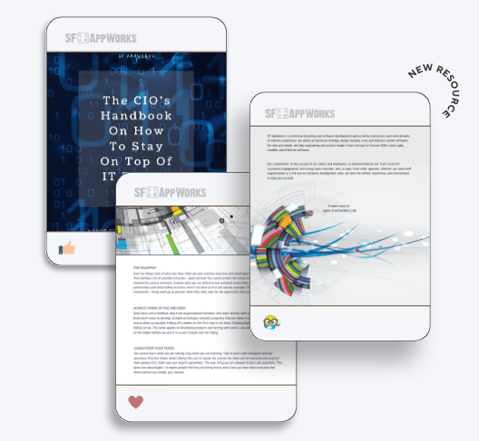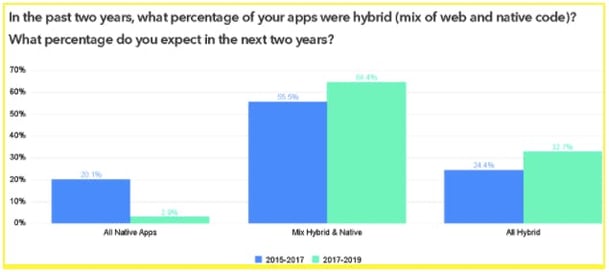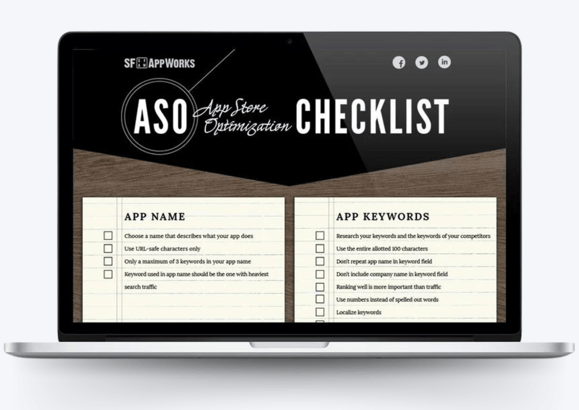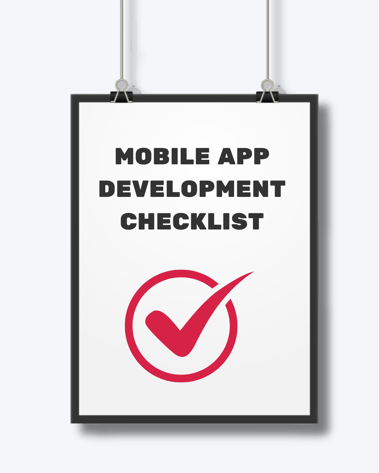This native vs hybrid app comparison covers how each of these types of mobile apps vary, as well as the advantages and disadvantages for each.
For business owners, the idea of creating an app for one’s business may seem like an excellent idea. Knowing the difference between native and hybrid apps is the first step to helping figure out what type of app would eventually move the business forward.
This is especially so in the age of the internet where applications are just about everywhere and digital marketing is the main mode of advertising. According to Comscore, mobile users spent 87% of their time in apps compared to some 13% on the web, and Statista reveals that the number of mobile app downloads each year has been steadily increasing.
But how does one go about developing an app? Let’s look at everything business owners need to know about native vs native apps, the app boom, and some guidance for creating apps for businesses.
We have compiled a table that compares the primary differences between Native Apps and Hybrid Apps.
| Point | Native Apps | Hybrid Apps |
| Platform | Developers create Native Apps to run exclusively on a single platform. | Developers create Hybrid Apps to run on multiple platforms. |
| Maintenance | Native Apps require complex maintenance because developers have to manage different versions for each platform they are designed for. | Hybrid Apps have relatively simple maintenance requirements, as there are typically only a few versions to manage. |
| User Experience | The Native Apps offer the most optimal user experience. | Due to less OS-specific customization, Hybrid Apps may not provide an optimal user experience, particularly in terms of graphics. |
| Cost | Developing the application incurs significant costs. | The cost of development is lower. |
The App Development Boom
2023 is a developer paradise. For the past decade or so, applications have quickly exploded in popularity and just about every consumer in the world uses apps via their mobile device. This is something business owners can absolutely take advantage of.
For e-commerce businesses or service providers, creating an app is a no-brainer. Online stores, counseling services, language tutors, and just about every other business out there that can maximize efficiency with an app for their consumers should definitely consider developing one.
However, apps may not be the best idea for every single business out there. Take a local grocery store, for example. You could consider (in the grocery store example) creating an app for your business where you display coupon codes and other deals. That may be useful to your customers, but if it doesn’t result in an increase in revenue that is equal or greater to the amount of time and money you spend developing the app, then app development may be a better choice sometime down the road.
It all comes down to brainstorming your use cases. Why would consumers want to use your app? What services would it provide consumers in your target market, and would it ultimately be a big enough boon to warrant the time and money that goes into making and managing an app? Take the time to sit down and evaluate exactly why you want an app for your company.
Native vs Hybrid App Comparison: 5 Essential Considerations
Instead of focusing on the superiority of one approach over the other, it is crucial to evaluate which type of application best aligns with your objectives. Before making a choice between native and hybrid apps, it is advisable to ask a series of important questions.
- Are you developing the application for a client, yourself, or an employer?
- What is the allocated budget for the development process?
- How soon does the application need to be launched?
- Who constitutes the target audience for the application?
- Which specific features are required to be incorporated?
In case you encounter difficulty in responding to any of these inquiries, it is recommended to consult your IT Infrastructure Library (ITIL) training for assistance.
Related: How To Budget For A Mobile App
Get A Free Copy Of 'Mobile App Development Checklist'
Can just Anyone Create Their Own App for Their Business?
The short answer is “yes, but”. In other words, yes, anyone can create an app, but they will need a compelling use case, a pool of users for the app, and developers. App development requires experience and expertise, which isn’t something a person can just learn overnight. If you’re a small business that is dead set on an app, start looking into hiring developers.
Here are a couple of resources for seeking out contract or freelance app developers:
If you can think of a use case for a business app that can really provide something tangibly useful to your customers and increase your conversions, it’s time to hire a developer.
But even if you do hire an app developer to take on the task of building your business app, you still have to decide whether to build that app natively, as a hybrid, or as a web app. It would be wise to understand some key differences between native and hybrid apps before diving into the project.
Get A Free Copy Of 'CIO's Handbook On How To Stay On Top Of IT Trends'

Related: How to Hire a Mobile App Developer
Are you thinking of building an app? Receive a 4-step app building checklist, from app idea to MVP, directly in your inbox.
What Are Hybrid Apps?
A hybrid app is, in at least one way, a type of native app. This is because hybrid apps can be downloaded from a platform’s application store like a native app. A hybrid app can access all of the native platform’s features (such as GPS, camera, accelerometer, and more).
There are, however, some very notable differences between hybrid apps and native apps.
Differences between Hybrid vs Native apps: Infographic
Here are the critical distinctions between hybrid and native apps.
![]()
Examples of hybrid apps:
- Amazon App Store: The hybrid nature of the Amazon App Store ensures accessibility and convenience for users to explore and access a wide range of apps.
- Instagram: The hybrid approach allows Instagram to provide a consistent user interface across platforms, ensuring a visually captivating and interactive platform.
- Twitter: It utilizes web-based components for content browsing, timelines, and interactions, while native features enable functionalities like push notifications, geolocation, and media uploads.
- Gmail: The app leverages web-based components for accessing and organizing emails, composing messages, and managing folders, while native functionalities enable offline access, push notifications, and seamless integration with the device's address book and calendar.
The Pros of Hybrid Apps
There are many pros to using hybrid apps for business purposes:
- Because there is a single code base for all platforms, developers only need to write it once and run the code wherever necessary. Native apps need to be built and maintained separately and coded individually for each platform.
- Hybrid apps are able to achieve the same hardware-based performance acceleration as native apps. This isn’t exactly a “pro” since native apps can do the same thing, but it is something to keep in mind.
- Hybrid apps have a sort of “one for all” build that can save time and money when developing different versions of the same app.
- Hybrid apps are able to have identical and consistent user experiences across platforms (for better or worse), regardless of whether or not the user moves between different operating systems, devices, or browsers. This can be better for efficiency, but worse in that it doesn’t take into account how users behave in different environments.
- The same developer or development team will be able to deliver hybrid apps for any and all platforms, including websites because all that is required to develop them is web technologies.
- Hybrid apps can have both online and offline access. If you currently only have a website, you’re missing out on a target audience that may sometimes operate without access to internet services. A developer can package a hybrid locally or through a server in order to create an application that functions (mostly) without the internet. You’ll be reaching people on trains, planes, or people with less than ideal data plans.
CHECK OUT THIS VIDEO ON HOW WE'RE INSPIRED BY TECHNOLOGY TO BUILD DIGITAL PRODUCTS
The Cons of Hybrid Apps
While hybrid apps are pretty useful, they also aren’t perfect:
Hybrid apps tend to have an issue of lagging. This is because hybrid apps are run on so many different operating systems, and interfacing complications can lead to lagging.
- Because of the nature of hybrid apps, the appearance of the app can vary between users. This depends on the version of the software they’re using and the operating system they are using as well. This will require excessive testing to avoid.
- For a lot of applications, performance is the same for hybrid apps as well as native apps. However, 3D and HD games, applications with high caliber graphics, and other performance-based apps may not operate consistently or well in hybrid app form.
- Hybrid apps can access all of the native device features, such as media and touchID. However, hybrid apps are dependent on native plugins. Sometimes, an entirely new device feature may not be readily available as a native plugin. A good developer can write their own, but this adds more complications and headaches to the development process.
- Hybrid apps are dependent on various different libraries and frameworks, such as Cordova or Ionic. These need to be in sync with the most recent platform version releases and changes.
- Because different platforms also have different hardware choices, you may have to develop different branches of features and user flows anyway, which increases development costs and time.
Related: 10 Powerful Benefits of Programming Outsourcing in 2023
Watch This Webinar on How To Ideate, Design & Develop Effective Native and Hybrid Mobile Apps
Watch our free webinar to learn how to align your ideation with a seamless design and development process. Level up your skills so you can create your own mobile app.
What Are Native Apps?
A native app is a type of software or program that has been developed to carry out a very specific task within a particular platform or environment. Native apps are built using software development tools (also known as SDK) for specific software frameworks, hardware platforms, or operating systems.
A native app is usually built using a Java Development Kit for Java platforms (Android) and iOS native apps are created with iOS SDK and Swift.

Source: Ionic survey.
Examples of Native Apps:
- Spotify: As a native app, Spotify leverages the capabilities of your platform, whether it's iOS or Android, to deliver high-quality audio and an intuitive user interface.
- WhatsApp: Its native integration ensures smooth performance, seamless synchronization, and quick access to your conversations, making it an essential communication tool.
- SoundCloud: It utilizes the native capabilities of your device to provide an immersive music streaming experience.
Related: The Three Main Methods of Application Development
The Pros of Native Apps
Some benefits to using native apps include:
- Native apps tend to be faster since they are native to the platform they are developed for.
- They tend to work better offline, meaning there is no internet connectivity required to run them (for the most part.) If one of your users is stuck in the middle of nowhere, such as on a plane or on the subway, they can still access the basic features of your application.
- Native apps tend to have a recognizable look and feel to them, as they are essentially a nuanced version of the operating system’s default applications. This familiarity can add to over user experience.
- Graphic-heavy applications, high definition games, and intensive animation applications will likely perform quite well as native applications. This is because native code is still faster than HTML and JavaScript. WebGL standards can help browser apps and hybrid apps for graphics-heavy functions in order to meet performance standards, but native apps still have that advantage of ease.
- They maintain aspect ratios to improve the quality of graphics and images within the app.
- Native SDKs are able to access device features without working through the complexity of native plugins. New device features will be available out of the box along with the SDKs, which simplifies the development management process.
- Native apps have few dependencies on open source libraries and platforms such as Cordova and Ionic, which makes native apps a little bit simpler to work with.
- From a product perspective, developing for a single platform like iOS can focus your resources on testing and creating the right experience for your users. Once that product-market fit is achieved, then you can more efficiently re-create those winning features for other platforms like Android or web.
GET A FREE COPY OF 'A STEP-BY-STEP DELIVERY OF CUSTOM APPS'
.png?width=349&height=494&name=custom%20apps%20delivery%20(7).png)
The Cons of Native Apps
Native apps do have a few drawbacks to consider:
- Releasing the same exact feature on all platforms at the same time is almost always quite difficult and time-consuming. This is because native apps have a different codebase.
- Different skill sets are required to develop, maintain, and manage the same application on each different platform, which ultimately adds to the cost of keeping up the application.
- Separate development efforts for each platform can be complicated and tedious, which tacks onto the development time.
- Each platform code will need to have its own release cycle and updates. This ultimately adds to development time and cost.
- Native apps tend to take longer to download, which could lead to potential users bailing halfway through the download process if it takes too long. Users will also need to open the app store, search for the app, open it, agree to terms and conditions, and then finally download– which could lead to them jumping ship if your app is not useful enough for the trouble.
- There is little flexibility when compared to hybrid apps.
Related: When to Build an App vs a Mobile Responsive Website
What Are Web Apps?
Along with native and hybrid apps, let's define what Web apps are. This definition will aid us in comprehending how native and hybrid apps differ from Web apps.
Web-based applications are optimized for mobile browsers, designed to be exclusively accessed through a web browser, without needing to install anything on the device itself. Web apps can range from simple tools like calculators and calendars to complex systems like online marketplaces and social networks. Built with HTML5 and JavaScript, these apps offer seamless compatibility across multiple browsers like Chrome or Safari.
Web apps are essentially websites with an interactive twist, providing a similar user experience to a mobile app. Overall, web apps have become increasingly popular due to their accessibility and ease of use, and are used for a wide variety of purposes by businesses, individuals, and organizations of all sizes.
Examples of web apps:
- Google Docs: With real-time editing, cloud storage, and easy sharing options, Google Docs enables users to work together effortlessly.
- Netflix: Its seamless streaming capabilities and user-friendly interface make it a go-to app for binge-watching enthusiasts worldwide.
- Trello: As a web app designed to streamline project management and organization, it presents a visual and flexible framework where users can create boards, lists, and cards to represent tasks, deadlines, and progress.
- Canva: It offers a wide range of customizable templates, fonts, images, and graphic elements, empowering users to effortlessly design professional-looking presentations, social media posts, infographics, flyers, and more.
The Pros of Web Apps
The biggest advantage lies in the cost-effectiveness of development.
For budget-conscious individuals or businesses lacking the need for advanced features or access to device's native functionalities, building a web app may be the cost-efficient solution.
The Cons of Web Apps
The downside of building such applications is web apps may run slower and provide a less user-friendly experience, also lacking availability on app stores.
One significant limitation of responsive websites is that they cannot be distributed through an app store. This can potentially be a deal breaker if you aim to monetize app downloads, as users are required to access them via a URL.
Related: Resource - App Store Optimization
Native vs Hybrid vs Web App Comparison: Which Should I Choose in 2023?
To put it plainly, the main difference between hybrid and native apps is this: Hybrid apps are developed across all platforms, while native apps are developed for specific operating systems. It’s the difference between having an individual app for an individual smartphone operating system, or an app that is consistent across all platforms and works identically well across them.
On the other hand, web apps solely provide users with access to interactions that are supported by web browsers. Despite having rich design elements, web applications are incapable of accessing device features.
Ultimately, the division lies within the goals and priorities of your business.
Native Apps Overview
Native apps are fast, fit the device’s features, and can be more targeted to the needs of the user. However, there is a lot of development that goes into native apps and that could lead to more time and money being spent. Look into native app examples to see what other people are doing for inspiration.
Hybrid Apps Overview
Hybrid apps are a bit easier to work with development-wise and may even be cheaper to produce in some cases, but can suffer from lagging and discrepancies between devices and operating systems. This can be highly problematic for a business-grade app. Like with native apps, it may be worth looking into hybrid app examples to see what common end results are.
Web Apps Overview
Some companies employ progressive web apps to achieve the broadest possible reach and acquire initial sign-ups. These web apps may have restricted capabilities or provide full-featured free trials for a limited duration. The companies subsequently leverage native or hybrid mobile apps to improve the experience for their paying customers.
GET A FREE COPY OF 'WHAT TO EXPECT FROM A CLICKABLE PROTOTYPE'.
Where to Learn More
Take a look at these valuable resources that provide insights into how users interact with native and hybrid apps:
- Here are several statistics regarding mobile operating systems.
- Explore the most recent statistics encompassing demographics of mobile users in the United States, the duration of smartphone usage, their preferences, and the types of apps they predominantly utilize.
- If you desire further information on mobile app downloads and their progression over time, I recommend referring to Statista's comprehensive report.
Conclusion
Ultimately, it is recommended to use a native app if you have less than a handful of months to develop the app. That’s because you want to focus all of your energy and resources on creating one experience for one user base, really well. If you fail at that, you will need to iterate quickly, and updating code for multiple platforms actually increases the workload. If you want to test a limited private market on the user-friendliness of your app, it may be worth developing it as a native app.
Once the testing phase is done and the features are tested and defined, it may be wise to switch to hybrid to scale to more platforms. If the application didn’t work out in the testing phase, you lucked out and saved a good chunk of change by not investing in hybrid development.
WOULD YOU GO NATIVE, OR HYBRID? TAKE A SNEAK PEEK INTO OUR APP DEVELOPMENT PROCESS:
.png?width=479&name=app%20development%20process%20of%20an%20app%20development%20company%20(6).png)
If, above all else, you want an app with the best possible user experience, security, and performance, opt for native development for your business’s application. When it comes down to it, a native application is a safer approach to development because it forces you to focus on minimum viable products rather than large scale feature sets. As the saying goes, it is better to do one thing really well than many things poorly.
Contact us for a consultation about which option is best for you!
Related: 5 Guidelines for Mobile App Startups to Follow
GET A FREE COPY OF OUR ASO CHECKLIST





.png?width=579&name=clickable%20prototype%20form%20cover%20(5).png)

COMMENTS